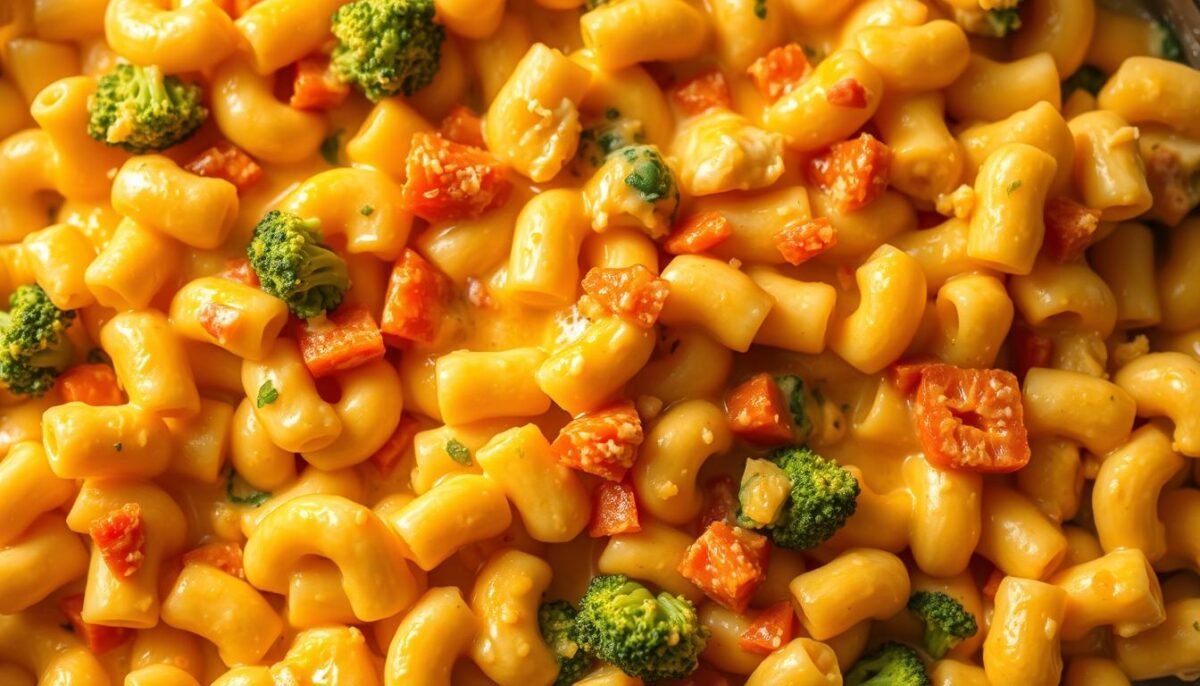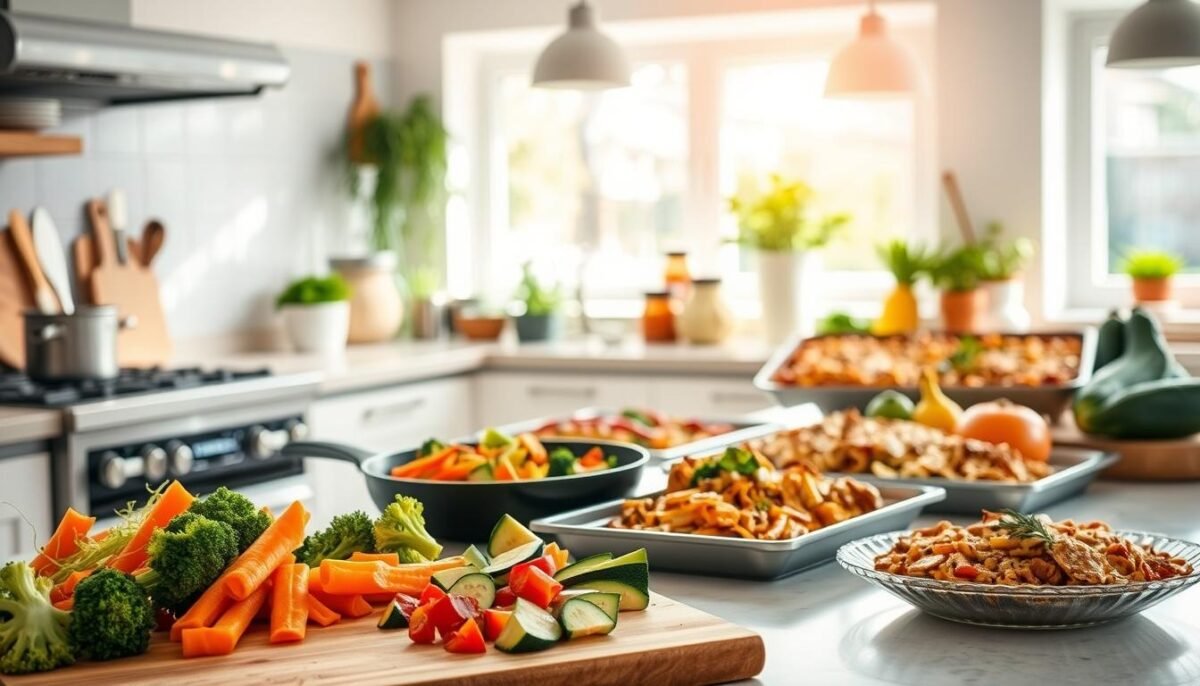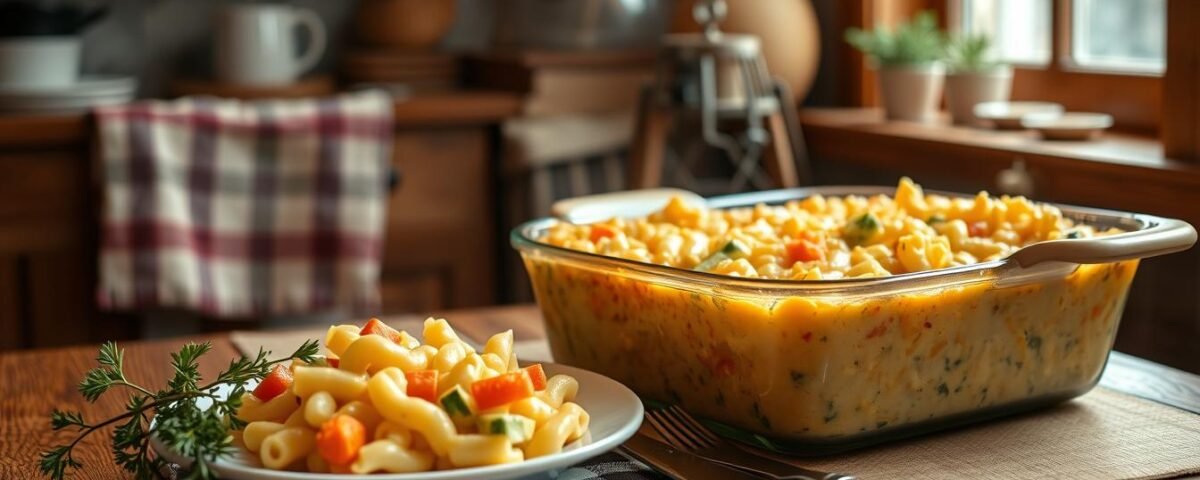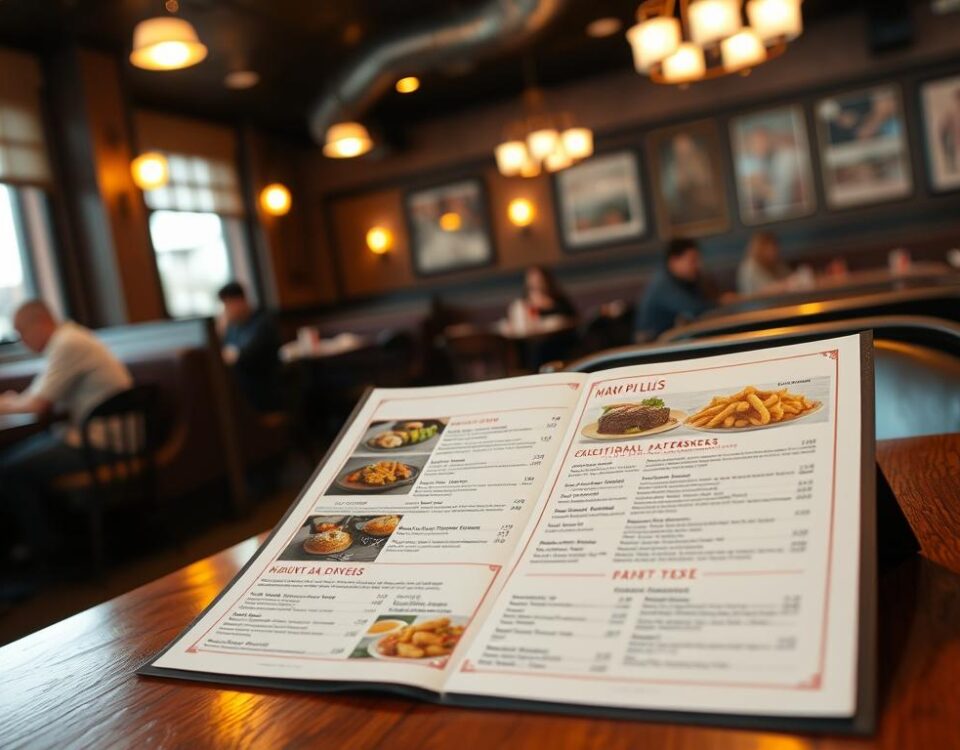
The Essential Permits You Need to Open a Restaurant in the US (2025 State-by-State Guide)
March 29, 2025
How to Turn Broccoli Into a Kid-Friendly Snack They’ll Actually Eat
April 10, 2025I’ll never forget the first time my niece scrunched her nose at broccoli. “It’s too crunchy,” she declared, pushing her plate away. That moment sparked my journey to create meals that celebrate flavor first while packing in nutrients – no negotiations required.
Take our creamy mac and cheese, for example. When I blended roasted cauliflower into the sauce, my toughest critic (my 8-year-old nephew) asked for seconds. That’s when I realized: great food speaks louder than labels. This guide isn’t about trickery – it’s about crafting delicious meals that naturally include more goodness.
You’ll discover how simple swaps can transform classics like pasta sauces and casseroles. We’ll explore creative ways to involve young helpers in the kitchen, building excitement about ingredients. Real recipes from trusted food bloggers prove that every bite counts, even when picky eaters rule the table.
Key Takeaways
- Boost nutrition without battles using flavor-focused recipes
- Blend veggies seamlessly into crowd-pleasers like mac and cheese
- Build trust through honest, tasty meal upgrades
- Engage children in food prep for better acceptance
- Discover 10+ tested recipes with hidden nutritional benefits
Introduction: The Challenge of Picky Eaters and Sneaky Veggies
After three failed attempts to serve spinach, I discovered the power of subtle ingredient swaps. Parents often walk a tightrope between nutrition and what actually gets eaten. The key? Working with young taste buds rather than against them.
Understanding Picky Eaters
Food rejection isn’t personal – it’s developmental. Many children instinctively distrust new textures or colors. A 2022 study found 70% of parents report selective eating phases. The solution isn’t camouflage, but creative inclusion.
Why Named Veggies Work Better
Calling mac and cheese “cauliflower-powered” builds curiosity, not suspicion. As blogger Jenna Matthews notes:
“Transparency turns ‘hidden’ into ‘hero’ – kids feel proud spotting blended carrots in their sauce.”
This approach transforms meals into discovery games. Take our crowd-pleasing pasta sauce: roasted red peppers and zucchini blend seamlessly, adding vitamins without altering familiar flavors. Even better? These flavor-first recipes satisfy adult palates too.
One mom shared how her daughter now requests “rainbow cheese dip” – our beet-infused cheddar spread. Small wins like these prove honesty fosters trust. And trust? That’s the secret sauce for lasting healthy habits.
Hiding vegetables kids meals: A Trusted Approach
The breakthrough came when I swapped half the cheese sauce for blended cauliflower – and nobody noticed. This method works because it respects familiar flavors while boosting nutrition. Pureed veggies mimic creamy textures children already love, making dishes like mac cheese ideal candidates for upgrades.
| Traditional Recipe | Hidden Veggie Version | Nutrition Boost |
|---|---|---|
| 2 cups cheddar | 1 cup cheddar + 1 cup steamed carrots | 300% vitamin A increase |
| Whole milk | Milk + roasted red peppers | Added vitamin C & fiber |
| Breadcrumbs | Crushed nuts + spinach powder | Healthy fats & iron |
Three tips ensure success: steam veggies until fork-tender, blend while warm, and mix gradually into sauces. I learned this when my first attempt at beet-infused mac cheese turned grainy – cooling ingredients separate faster.
Timing matters too. Add purees during the final sauce simmering stage. For busy nights, freeze single-portion veggie blends. One parent shared how this prep cut dinner stress: “Now I grab frozen squash cubes instead of chopping!”
The goal isn’t deception. As chef Amanda Gorman advises:
“Call it ‘sunset pasta’ when using sweet potato sauce – makes dinner an adventure.”
This approach builds trust through gradual changes. Start with ¼ cup puree per batch, increasing as taste buds adjust. Before long, that hidden veggie boost becomes the new normal at your table.
The Benefits of Adding Extra Veggies to Family Dinners
Family dinners take on new life when veggies become silent partners in nutrition. Through trial and error, I’ve found that strategic additions create meals where everyone wins – flavor stays center stage while nutrients sneak backstage.
Nutritional Advantages
Extra veggies pack powerful punches. A single cup of blended carrots adds 400% daily vitamin A, while zucchini boosts fiber without altering textures. My favorite trick? Stirring pureed cauliflower into cheese sauces for creamy consistency plus:
- B-vitamins for energy
- Vitamin K for bone health
- Antioxidants for immunity
These upgrades transform basic dishes. Take marinara sauce – adding roasted eggplant and mushrooms triples fiber content. One parent told me: “Our spaghetti nights now feel like superfood feasts!”
Building Trust at the Dinner Table
Quality ingredients speak volumes. Fresh spinach in cheesy casseroles retains vibrant color, sparking conversations about food origins. I always name-check additions: “This sauce has sunset-orange peppers!” creates excitement.
Food blogger Tina Reyes shares:
“When my son spots green flecks in his mac and cheese, we celebrate the ‘broccoli confetti’ together.”
This openness fosters trust. Simple swaps become shared discoveries rather than secrets. The result? Happier family meals where everyone feels included in the nutritional journey.
Easy and Creamy Veggie Mac Cheese Variations
The first time I stirred roasted cauliflower into mac cheese, my sister texted: “This is your best version yet!” That’s the magic of smart swaps – they elevate comfort food while keeping its soul intact. Let’s explore two crowd-pleasing twists that turn this classic into a nutrition powerhouse.

Cauliflower Mac and Cheese Recipes
Steamed cauliflower blends into velvety sauces better than any veggie I’ve tried. Its mild flavor disappears behind sharp cheddar, while adding:
- 45% daily vitamin C per serving
- Fiber for lasting fullness
- Creaminess without heavy cream
My foolproof method? Roast florets with garlic until golden, then blend with milk before mixing into cheese sauce. Food blogger Lisa Chen notes:
“Roasting deepens the flavor – kids think it’s a fancy restaurant recipe!”
Butternut Squash Mac and Cheese Ideas
Sweet butternut squash pairs perfectly with smoky gouda. I use frozen cubes for quick prep – they steam in 5 minutes while pasta cooks. For every cup of cheese sauce, swap ½ cup with squash puree. Benefits include:
- Natural sweetness balances tangy cheeses
- Vibrant orange color excites picky eaters
- Beta-carotene boost equivalent to 3 carrot sticks
Pro tip: Add a pinch of nutmeg to squash-based sauces. It highlights the veggie’s natural notes without shouting “There’s squash here!”
Both variations keep prep under 30 minutes. For busy nights, make extra purees and freeze in muffin tins – each “cup” perfectly seasons one box of pasta. Now that’s what I call dinner victory!
Beyond Pasta: Delicious Hidden Veggie Recipes
When my nephew declared chicken nuggets “boring,” I saw a golden opportunity. Beyond mac and cheese lies a world where favorite foods become nutrient-packed adventures. Let’s explore two game-changers that turn everyday dishes into vitamin-rich powerhouses.
Innovative Chicken Nuggets with Sweet Potato
Sweet potato transforms ordinary nuggets into crispy, nutrient-dense bites. Its natural sweetness balances savory flavors while adding:
- Vitamin A for eye health
- Fiber for better digestion
- Moist texture without frying
| Traditional | Veggie Version | Benefits |
|---|---|---|
| White breadcrumbs | Whole grain + sweet potato | 3g extra fiber |
| Chicken breast only | 50/50 chicken & mashed beans | Plant protein boost |
| Deep-fried | Air-fried with olive oil spray | 40% less fat |
Food scientist Dr. Ellen Park shares:
“Combining pureed veggies with ground chicken creates perfect binding – no one misses the filler.”
One-Pot Vegetable Broth Wonders
This broth became my secret weapon during flu season. Simmer carrot tops, celery leaves, and onion skins – ingredients often tossed – for a mineral-rich base. Use it to:
- Cook grains like quinoa or rice
- Boost soups and stews
- Steam veggies for extra flavor
Best part? It freezes beautifully in ice cube trays. Toss a cube into your next hidden veggie mac sauce for subtle depth. One parent told me: “My picky eater drank three bowls – thought it was ‘magic potion’ soup!”
Creative Beverages and Snacks with Secret Veggies
My blender became a magic wand when I realized its power to transform greens into sweet treats. Snack time offers golden opportunities to weave nutrition into foods children already enjoy – no covert ops required.
Smoothies That Surprise
Spinach disappears in fruit-forward blends. Try this crowd-pleasing recipe: frozen mango, banana, and orange juice with two handfuls of fresh greens. The vibrant color distracts from the veggie boost while delivering:
- Vitamin K from spinach
- Fiber from chia seeds
- Natural sweetness from ripe fruit
Nutritionist Dr. Leah Torres recommends:
“Freeze chopped zucchini into ice cubes – they chill smoothies without watering them down.”
This trick adds creaminess while sneaking in extra nutrients. For chocolate lovers, blend steamed beets into cocoa-based drinks – their earthiness complements dark flavors perfectly.
Veggie-Infused Muffins and Pancakes
Grated zucchini or carrot fold seamlessly into batters. My go-to pancake recipe uses pureed pumpkin for fluffy texture and:
| Traditional | Veggie Twist | Per Serving |
|---|---|---|
| All-purpose flour | 50% whole wheat + oats | 2g extra fiber |
| White sugar | Maple syrup + applesauce | 30% less sugar |
| Plain batter | Shredded zucchini/carrot | 1/2 cup veggies |
Bake at 375°F for golden tops that kids love. For muffins, mix pureed sweet potato into batter – its natural sugars reduce need for added sweeteners. Pro tip: Use silicone molds shaped like animals or stars. When food looks playful, nutrition becomes an afterthought.
Presentation matters. Drizzle yogurt “lightning bolts” on pancakes or call zucchini bread “green machine fuel”. These touches turn snacks into edible adventures kids love exploring.
Prepping Veggies Ahead Time for Busy Families
Sunday afternoons became my secret weapon when I discovered strategic prep work. By dedicating 90 minutes to kitchen organization, I transformed hectic weeknights into stress-free cooking sessions. The key lies in smart storage and flavor-forward foundations that adapt to multiple meals.
Efficient Meal Prep Strategies
Start with versatile bases that freeze well. My freezer always contains:
- Portioned veggie purees (cauliflower, butternut squash)
- Pre-chopped stir-fry blends in airtight bags
- Herb-infused olive oil cubes for quick sautéing
Blend sauces ahead time using seasonal produce. Roasted red pepper marinara or spinach pesto keeps for 3 months frozen. Thaw overnight or simmer directly from frozen – perfect for whole wheat pasta nights.
| Traditional Approach | Prep-Smart Version | Time Saved |
|---|---|---|
| Daily veggie chopping | Pre-cut weekly batches | 25 mins/day |
| Separate side dishes | Mix prepped veggies into mains | 1 pan cleanup |
| Last-minute seasoning | Pre-mixed spice jars | 5 mins/meal |
Food blogger Marco Ruiz shares his tip for success:
“Label containers with use-by dates and recipe ideas – no more mystery freezer bricks!”
Store blended sauces in portioned jars, leaving ½ inch space for expansion. For grains, cook double batches using veggie broth. This creates ready-made bases for casseroles or hidden veggie fried rice later in the week.
How to Make the Perfect Hidden Veggie Sauce
The hum of my blender became music when I cracked the code to velvety sauces. Creating rich, nutrient-packed bases starts with mastering texture – no one wants gritty “surprise” chunks in their comfort food.

Blending Techniques for a Smooth Texture
Steam veggies until they collapse under a fork – this softness prevents blender strain. Hot ingredients blend smoother than cold. My golden ratio: 1 cup cooked produce to ½ cup liquid. Try these steps:
- Layer softest ingredients at blender bottom
- Start on low speed, gradually increasing
- Blend 90 seconds minimum for silky results
Cheese integration makes or breaks cheese sauce. Stir shredded cheddar into warm puree off-heat to prevent separation. Food scientist Dr. Emily Carter notes:
“Melting cheese at 150°F preserves texture – overheated sauces turn rubbery.”
Adjust thickness with broth or milk tablespoon by tablespoon. Ideal consistency coats pasta evenly without pooling. For our famous Hidden Veggie Mac, the sauce should ribbon off a spoon.
| Issue | Fix | Tool |
|---|---|---|
| Grainy texture | Blend longer + strain | High-speed blender |
| Too thick | Add warm milk | Whisk |
| Bland flavor | Roast veggies first | Sheet pan |
Freeze extra sauce in ice cube trays for instant upgrades. One cube transforms boxed mac into a nutrient powerhouse – proof that smart prep makes healthy eating effortless.
Mixing Familiar Flavors with Secret Vegetables
The moment my neighbor’s son asked for thirds of “orange spaghetti,” I knew we’d cracked the code. Classic dishes become nutrition powerhouses when everyday ingredients team up with clever veggie additions. The trick? Preserve what’s loved about the original while layering in goodness.
Take taco night – blending roasted peppers into seasoned meat keeps flavors bold while adding vitamin C. Food blogger Rachel Kim shares:
“Call it ‘sunset beef’ to spark curiosity. Kids notice the color change, not the extra nutrients.”
Balance is key. For every cup of marinara, I mix in ½ cup pureed carrots and mushrooms. This maintains the rich, tomato-forward taste families expect while tripling fiber content. Tested recipes prove gradual changes work best – start with 1-2 spoonfuls per batch.
Honesty builds trust. I always name-check additions playfully: “These are confetti corn muffins!” beats silent swaps. One parent reported their picky eater now requests “forest green dip” – our spinach-enhanced ranch dressing.
Simple tweaks make all the difference. Grate zucchini into meatballs or mix sweet potato into pancake batter. When familiar foods get nutritious upgrades everyone enjoys, dinner becomes a celebration – no negotiations needed.
Involving Kids in the Cooking Process
Watching my 4-year-old cousin giggle as she sprinkled cheese onto our homemade pizza taught me a valuable lesson: kitchen participation fuels curiosity. When little hands help prepare meals, they’re more likely to explore new flavors. Start with simple tasks that match their abilities – you’ll build trust faster than a blender purees carrots.

Fun Blending Activities
Letting toddlers press the blender button transforms nutrition into playtime. Create a “smoothie lab” where they add pre-measured fruit and spinach leaves. The whirring sound becomes a magic trick that turns greens into tasty drinks. As food educator Marco Perez notes:
“Kids eat what they’ve helped create – even if it’s just dropping blueberries into the mixer.”
Kid-Friendly Kitchen Tasks
Safety and simplicity are key. Use this guide to match tasks with developmental stages:
| Age Group | Task | Skill Developed |
|---|---|---|
| 2-3 years | Washing veggies | Motor skills |
| 4-5 years | Mixing dry ingredients | Math basics |
| 6+ years | Greasing pans | Responsibility |
My niece now requests “salad scientist” nights after helping tear lettuce leaves. These small victories prove that ownership over meal prep drives adventurous eating. Keep aprons handy and expectations flexible – spilled flour cleans up easier than resistance at the dinner table.
Troubleshooting Common Hidden Veggie Issues
When my friend’s daughter pointed at her mashed potatoes and shouted “Green stuff!”, we turned panic into progress. These moments aren’t setbacks – they’re chances to build food confidence. Here’s how to navigate common speed bumps with grace.
What to Do When Little Detectives Investigate
If curious eaters spot additions, celebrate their discovery! Try:
- “You found our secret ingredient! Let’s taste-test together”
- Comparing flavors before and after veggie additions
- Offering dipping sauces to customize bites
Food blogger Mia Torres suggests:
“Turn questions into cooking lessons. Show them how carrots sweeten the sauce naturally.”
This transparency maintains trust while expanding palates.
Flavor Rescue Missions
Strong veggie tastes can sometimes dominate. My go-to fixes:
- Add citrus zest to brighten earthy flavors
- Mix in roasted garlic for depth
- Balance bitter notes with a teaspoon of honey
For tomato-based dishes, a pinch of cinnamon masks green undertones. If textures bother picky eaters, strain purees through a fine mesh. Remember – small adjustments often make big differences in acceptance.
Adapting Favorite Recipes with Extra Vegetables
My friend’s skeptical look when I added spinach to her lasagna taught me the power of subtle upgrades. Traditional dishes become nutrition heroes when we lean on flexible ingredients that blend into familiar flavors. The secret? Choosing produce that plays well with existing textures and spices.

Using Versatile Ingredients
Some veggies work like culinary chameleons. Try these easy swaps that keep dinners exciting:
- Shredded zucchini folds into meatloaf like a pro
- Mashed cauliflower replaces ⅓ of potatoes seamlessly
- Roasted red pepper puree boosts pasta sauce depth
Take classic beef stir-fry. Adding diced mushrooms stretches portions while absorbing savory flavors. As food blogger Carla Diaz notes:
“When I mix riced cauliflower into taco meat, my family thinks it’s extra seasoning – not veggies!”
| Original Dish | Veggie Twist | Taste Impact |
|---|---|---|
| Mashed potatoes | 30% steamed parsnips | Creamier texture |
| Chili | Diced sweet potatoes | Natural sweetness |
| Pizza dough | Spinach powder | Earthy undertones |
Balance is key. Start with small additions – one handful of grated carrots in meatballs or a spoonful of pumpkin in pancake batter. These tweaks let favorite meals evolve naturally, keeping both flavor and nutrition front-row.
Innovative Ideas for Family Meals with Hidden Veggies
My cousin’s birthday party changed everything. As kids devoured cheesy baked ziti, no one guessed the secret ingredient – pureed carrots and roasted eggplant blended into the sauce. This moment proved that comfort foods can become nutrition heroes without losing their soul.
Comfort Food Reinvented
Classic dishes shine brighter with smart swaps. Try these upgrades for a happy family dinner:
- Mix steamed butternut squash into mac and cheese sauce
- Layer spinach between lasagna noodles
- Stir pureed cauliflower into alfredo sauce
Food blogger Sarah Miller shares her pasta hack:
“Blend roasted red peppers into marinara – kids think it’s ‘supercharged spaghetti night!’”
| Classic Dish | Veggie Boost | Per Serving |
|---|---|---|
| Fettuccine Alfredo | ½ cup cauliflower puree | +2g fiber |
| Baked Ziti | 1 cup diced mushrooms | +1.5g protein |
| Spaghetti | ¼ cup carrot puree | 300% vitamin A |
For type pasta lovers, try spiralized zucchini in pesto dishes. Its springy texture fools even picky eaters. The key? Keep flavors familiar while adding nutrients quietly.
Make meals interactive with DIY topping bars. Let your happy family customize bowls with roasted veggies and cheeses. When everyone participates, nutrition becomes part of the fun – not a dinner debate.
Conclusion
Watching my neighbor’s daughter devour “cheesy dragon pasta” without a green in sight taught me the power of smart swaps. This journey proves family dinners thrive when we celebrate flavor while packing in nutrients naturally.
From velvety mac and cheese boosted with cauliflower to air-fried nuggets hiding sweet potato, these recipes turn picky moments into victories. The secret? Honesty paired with creativity. Naming additions like “sunset sauce” or “confetti muffins” builds excitement rather than suspicion.
Meal prep shortcuts make it super easy – frozen veggie cubes transform boxed pasta in minutes. Involving little helpers with tasks like blending or sprinkling cheese fosters kitchen confidence. When spills happen (and they will!), remember: messes wash off faster than food battles resolve.
Ready to try? Start with our crowd-pleasing butternut squash mac recipe or veggie-packed pancakes. Share your twists below – I’d love to hear which “secret ingredient” becomes your family’s new favorite. Here’s to happy plates and healthier habits, one delicious bite at a time!
FAQ
What’s the best veggie to blend into mac and cheese without changing the flavor?
I love using butternut squash or cauliflower! Both blend smoothly into the cheese sauce, adding creaminess without overpowering the cheesy taste. Just steam and puree them before mixing into your favorite recipe.
How do I keep hidden veggies from changing the texture of foods like chicken nuggets?
Grate or finely chop veggies like sweet potato or zucchini, then mix them into the breading or meat mixture. Baking instead of frying also helps maintain a crispy, familiar texture kids adore.
Can I prep veggie-packed sauces ahead of time for busy nights?
Absolutely! I make big batches of pureed butternut squash or spinach sauce, freeze them in ice cube trays, and toss a few into pasta dishes or soups whenever I need a quick, nutrient-rich boost.
How do I get my toddler involved in cooking with hidden veggies?
Let them rinse veggies, press blender buttons (supervised!), or stir sauces. When they help, they’re more curious to taste their “creations”—even if there’s spinach in the pancakes!
What if my kid hates a veggie I’ve hidden in their favorite meal?
Start with mild-flavored veggies like carrots or squash. If they notice, own it playfully: “Oops, you found my magic green dust!” Gradually introduce bolder options as they get used to the idea.
Can I add veggies to smoothies without making them bitter?
Yes! Frozen cauliflower or steamed beets blend seamlessly into berry or mango smoothies. The sweetness masks any earthiness, and a splash of almond butter adds richness.
Will hidden veggies alter the color of foods like cheese sauce?
Slightly, but it’s fixable! Butternut squash adds a golden hue, while spinach turns sauces green. If color matters, stick to white or orange veggies and use sharp cheddar to dominate the shade.
How long can I store meals with blended veggies in the fridge?
Most dishes last 3–4 days. For longer storage, freeze sauces or casseroles in portion-sized containers. Reheat with a splash of milk or broth to revive creaminess.
What cheese works best for hiding veggies in sauces?
I swear by sharp cheddar or Parmesan—their bold flavors mask veggie notes. For extra creaminess, add a slice of American cheese or a dollop of cream cheese to the blend.
Can I use this approach for gluten-free or dairy-free diets?
Totally! Swap regular pasta for chickpea or lentil noodles, and use nutritional yeast or cashew cream in sauces. The veggie-blending trick works with any dietary tweaks.



